Everything You Need to Know About the Special Election for Public Advocate

Tish James voting (photo via Gotham Gazette)
Updated as of January 29.
In February, New Yorkers will have the opportunity to cast a ballot for a new public advocate in the first-ever special election for a citywide office. The current vacancy was created when the most recent officeholder, Letitia James, was officially sworn in as the state’s attorney general, a position she won in the November general election.
The public advocate is the people’s representative, a watchdog and ombudsperson, with a post that has little direct influence over city policy but a strong bully pulpit from which proposals can be made, grievances can be amplified, and the mayor and the rest of local government can be held to account. The office is charged with hearing complaints from New Yorkers about city services and can investigate the work of city agencies though with limited ability to enforce reforms. The office holder can also introduce legislation in the City Council but cannot cast a vote.
The special election to fill one of just three popularly-elected citywide positions has a crowded field and a short timeline. Here’s what you need to know.
When is the election?
Mayor Bill de Blasio officially proclaimed on January 2 that the election would be held on Tuesday, February 26.
Who is running?
There are 23 candidates who filed petition signatures with the New York City Board of Elections to get on the ballot, but not all of them will qualify. Once the mayor signed the city proclamation, the many candidates had 12 days to collect the 3,750 petition signatures they needed to get on the ballot. Signatures can come from any registered voter in the city, and many candidates pursued far more than the minimum required in order to protect themselves from challenges of invalid signatures.
Special elections in New York are nonpartisan -- no candidate can run on an existing party line like that of the Democratic or Republican Party -- and each candidate has created their own ballot line that is not supposed to resemble another political party’s name. Another quirk in the system is that ballot position is decided by the order in which petition signatures are submitted, which made the mad scramble to get on the ballot that much more frantic.
The number of candidates, even in a narrowed field, could test the limits of modern ballot design since half a dozen sitting and former New York City Council members, several State Assembly members, and a number of activists and others outside of government are running. They include former City Council Speaker Melissa Mark-Viverito, who submitted her petition signatures first and will likely be at the top of the ballot; sitting City Council Members Jumaane Williams, Rafael Espinal, Ydanis Rodriguez, and Eric Ulrich, the lone Republican office-holder in the race; Assemblymembers Michael Blake, Latrice Walker, Ron Kim, and Daniel O’Donnell; activist and journalist Nomiki Konst; Columbia University professor David Eisenbach, who ran against James in the 2017 Democratic primary for public advocate; attorney Dawn Smalls; and entrepreneur Benjamin Yee, among others.
The actual field will become much clearer once petition challenges have been ruled on by the Board of Elections on January 29 -- eight candidates are being challenged -- whereby candidates can have their ballot access denied due to faulty petitions. Candidates often file suit to get other candidates kicked off on technicalities -- something as small as a missing cover sheet on a petition can ensure that a candidate does not qualify.
How much campaign cash can they raise and spend?
Along with his announcement of the date of the special election, the mayor also signed into law a bill sponsored by Council Member Ben Kallos that immediately puts into effect new campaign finance regulations that were approved by voters through a ballot referendum in November.
The new rules allow candidates to choose between two tiers of participation in the city’s public matching funds program, administered by the New York City Campaign Finance Board, which monitors campaign fundraising and spending. The program currently gives participating candidates a 6-to-1 match for the first $175 of every campaign contribution. Those who choose to abide by these old rules would be limited to a maximum campaign donation of $2,550, and can receive a maximum of $2.5 million in public funds.
The second, new tier allows candidates to opt for a $1,000 contribution limit and receive an 8-to-1 match in public funds for the first $250 of each contribution, allowing them to receive up to $3.4 million in public funds. To receive public funds, a candidate would have to meet the dual threshold of raising a total of $62,500 from at least 500 individual contributors.
Those that choose to participate in the public funds program will have to abide by a $4.5 million spending limit, though any candidate is unlikely to reach that astronomical number in just seven weeks. They will also have to complete a mandatory campaign finance training at the CFB.
The first campaign finance disclosure deadline passed on January 15, with several candidates showing strong fundraising numbers. The following disclosure deadline is January 25, and there are others into February.
Will the candidates debate?
Many of the candidates have already appeared and are regularly appearing at a series of public forums and debates organized by advocacy groups, political clubs, and others to lay out their platforms and positions on specific policies. But there will also be two official debates organized by the CFB. The first debate will be held February 6 and the second one is scheduled for February 20. Both will be broadcast by Spectrum News NY1, and livestreamed on NY1's website and Facebook page.
To qualify for the first debate, candidates will have to raise and spend at least $56,938 by January 21, the campaign finance disclosure deadline just prior to the debate. The second debate, for “leading contenders” will have greater thresholds -- candidates will have to raise and spend $170,813 by February 11, and must be endorsed by a state, local or federal elected official representing New York City, or by a membership organization with 250 members living in the city. The sponsors of the debates include Politico New York, Citizens Union, the League of Women Voters, the Latino Leadership Institute, Borough of Manhattan Community College, NAACP New York State Conference Metropolitan Council, and Delta Sigma Theta Sorority, Inc., East Kings County Alumnae Chapter.
Ten candidates qualified for the first debate.
Unlike in the past, the debates will also be simulcast by the city-run NYC Life, making them freely and publicly accessible, as mandated by a law passed last year.
What will the election cost?
The New York City Board of Elections estimates that the special election will set the city back at least $15 million, a price that is nearly five times the actual annual budget of the public advocate’s office.
But, unlike a regular citywide election, there will be no costly runoff if a candidate does not meet a certain threshold. The candidate with the most votes wins, even if a large field means the winner takes a small percentage of the vote.
Who can vote and who will vote?
Every registered voter in the city can vote in the special election but turnout is likely to be low, though it is hard to predict since the city has never held a citywide special election before. New voter registration applications sent by mail must be postmarked no later than February 1 but the BOE will accept in-person applications till 5 pm on February 16.
In City Council special elections, turnout tends to be severely depressed owing to several factors -- a lack of awareness of the election, an election date outside of the expected September-November window, voter apathy.
In the 2017 election, when James was reelected to a second term, a total of 1.1 million New Yorkers voted for public advocate, only about 22 percent of the total registered voters in the city at that time.
Who will win?
Who knows. But, we do know that the winner of the special election will, if he or she wants to keep the office, have to run for reelection in the fall. By city law, there will be a typical set of primary and general elections in September and November to decide the public advocate for the rest of the current four-year term, which runs through the end of 2021. The winner of the special election will only be guaranteed the office through the end of this year.
Democratic and/or Republican primaries will be held as needed in September before a November general election. There could also be a run-off if there is a crowded primary or general election field and no candidate earns 40 percent of the vote initially. In 2013, James won the Democratic nomination in a primary run-off before easily winning the general election.
***
by Samar Khurshid, senior reporter, Gotham Gazette
@samarkhurshid @GothamGazette
Note: This article has been updated to include the voter registration deadlines for the special election and other information.
Max & Murphy Podcast: Public Advocate Candidate Rafael Espinal
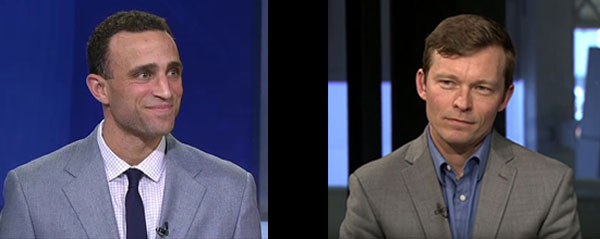
Ben Max, left, of Gotham Gazette, and Jarrett Murphy, right, of City Limits
January 2, 2019 - Max & Murphy Podcast: Public Advocate Candidate Rafael Espinal
 City Council Member Rafael Espinal, a Brooklyn Democrat, is among the candidates running in the special election to become the next New York City Public Advocate. With the election set for Tuesday, February 26, it's a sprint for candidates to craft their messages, collect ballot petition signatures, raise money, reach voters, and secure support. Espinal joined the show to discuss his candidacy, including his record in the City Council and his vision for the role of Public Advocate. He explained he's running on the "Livable City" ballot line in the non-partisan special election, and why, and much more.
City Council Member Rafael Espinal, a Brooklyn Democrat, is among the candidates running in the special election to become the next New York City Public Advocate. With the election set for Tuesday, February 26, it's a sprint for candidates to craft their messages, collect ballot petition signatures, raise money, reach voters, and secure support. Espinal joined the show to discuss his candidacy, including his record in the City Council and his vision for the role of Public Advocate. He explained he's running on the "Livable City" ballot line in the non-partisan special election, and why, and much more.
Listen to the conversation and let us know what you think -- we're on Twitter @TweetBenMax and @JarrettMurphy. You can listen to the show through the embedded audio below or download the episode wherever you get your podcasts, under "Max & Murphy," and listen to Max & Murphy live on Wednesdays at 5 p.m. on WBAI radio, 99.5FM or wbai.org
***
by Ben Max, Gotham Gazette
@tweetBenMax @GothamGazette
The 10 Most-Read Gotham Gazette Stories of 2018

(photo: The Governor's Office)
As 2018 comes to a close, we’re looking back at some of our “best” and most-read articles of the year. In a separate post, we’ll highlight some of the “best” pieces we reported that aren’t among our top ten most-read articles, which are listed below. This list does not include articles like election guides or candidate lists or even our summaries of voter turnout numbers, all of which are often among our most-read posts, as was our article that reported on the mayor's charter revision commission announcing which questions it would put on the November ballot.
The list below also does not include opinion pieces, though several of the op-ed columns that we published this year did qualify in terms of page-views. But this list is for reporting done by Gotham Gazette, and here it is, our ten most-read articles of 2018:
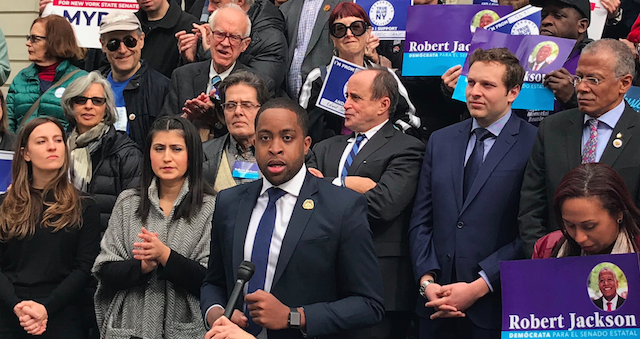 |
1. Conflict Escalates Between Working Families Party and Independent Democratic Conference
by Ben Max, March 2018
In late February the Working Families Party announced a series of candidates it was backing to challenge members of the Independent Democratic Conference in state Senate primaries. While a lot changed from February to the September primaries, in the end six WFP-backed candidates defeated members of what had been the eight-member IDC, with the WFP working alongside an extremely organized and energized group of other activists set on unseating IDC members and flipping the state Senate to Democrats.
Read the March article about the WFP escalating its efforts to unseat IDC members.
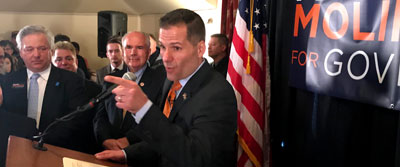 |
2. In Run for Governor, Marc Molinaro Will Make A Character Argument
by Ben Max, March 2018
As Republican Marc Molinaro launched his campaign for governor, this profile outlined how he would pitch himself to voters as a person of integrity and good leadership, and juxtaposed as such to the image he would portrary of Governor Andrew Cuomo. The Dutchess county executive ran a spirited and earnest campaign, regularly hitting the themes of this initial Gotham Gazette look at his candidacy, which was based on an hourlong interview with Molinaro while he was deciding whether to run or not. In the end, Cuomo dispatched Cynthia Nixon in the Democratic primary, then beat Molinaro and others in the general election, winning a third term.
Read the March article about how Molinaro would present himself to the statewide electorate and his stances on several key issues.
 |
3. Questions Arise as De Blasio Administration Rezones Series of Low-Income Neighborhoods
by Sam Raskin, March 2018
Mayor de Blasio's administration has pushed through several neighborhood rezonings aimed at adding housing density, building affordable housing, and making neighborhood improvements. All of them have occurred in low-income neighborhoods, a phenomenon not lost on many. In this piece, we examine the trend and what it means as areas like East New York, East Harlem, and the Jerome Avenue corridor in the Bronx are rezoned.
Read the March article about the de Blasio administration's approach to neighborhood rezonings, and which areas of the city appear to be off limits in terms of seeking added housing density.
 |
4. Major Cuomo Supporters Don’t Want a Democratic State Senate
by Ben Brachfeld, April 2018
As Governor Cuomo professed his full support for helping to flip the state Senate to Democrats, this article examined the fact that many of Cuomo's biggest supporters were also supporters of a Republican Senate. The Democratic governor had, after all, himself been seen as supportive of a split Legislature, with Democrats in control of the Assembly, so that he could triangulate, carefully craft which progressive policies he wanted to pass, and keep fiscal restraints in place, while also pushing ahead a charter school and real estate friendly agenda that aligned with his beliefs.
Read the April article outlining the main Cuomo backers who also backed a Republican state Senate.
 |
5. Is Cynthia Nixon Qualified To Be Governor?
by Ashley Hupfl, April 2018
From the moment she declared her candidacy for governor, Cynthia Nixon was dogged by one key question: what makes you qualified to lead the state of New York and run its government? Nixon gave various answers to the question, mostly saying that she had the right values and the right policy plans. In this article, we explored her qualifications and the general question of what makes someone qualified to be governor.
Read the April article discussing Nixon's resume and what it means to be qualified to become governor.
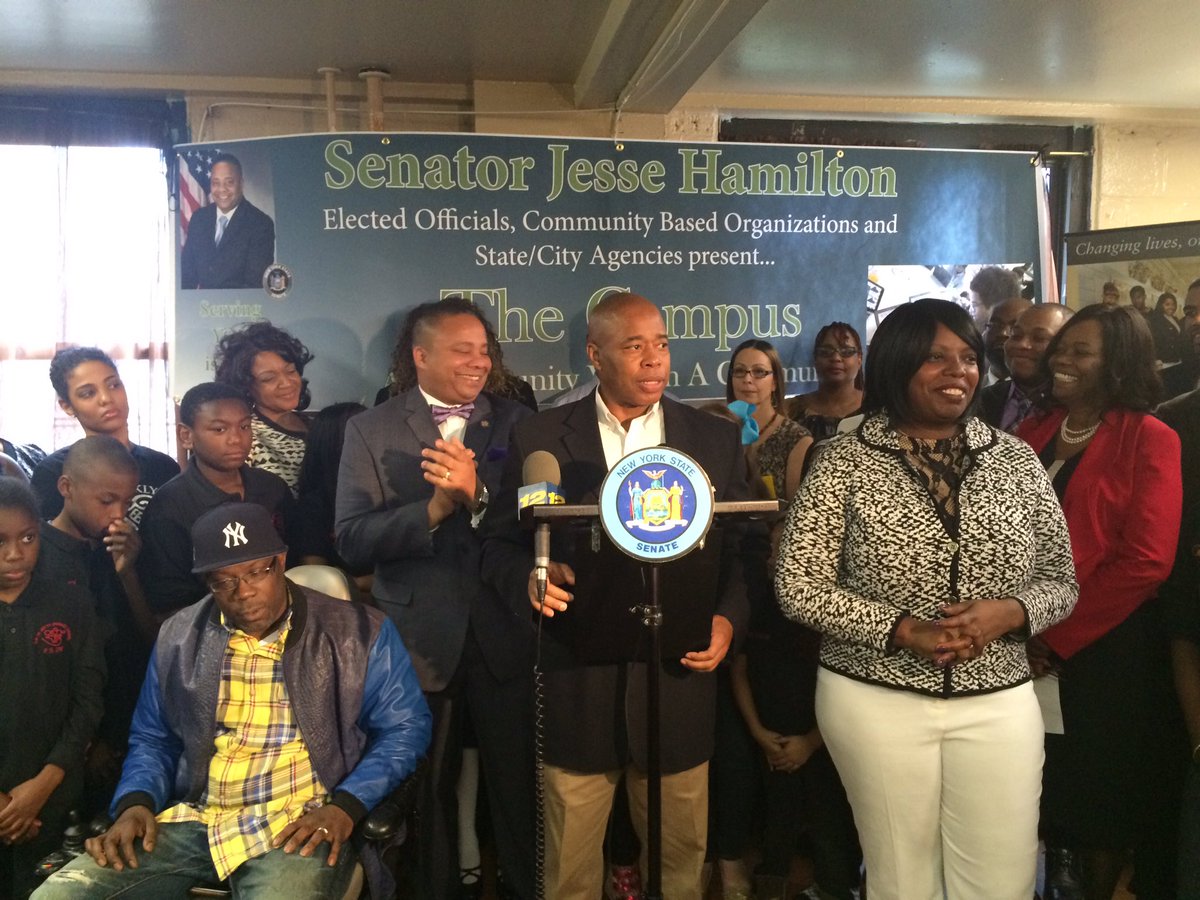 |
6. Senator Facing Tough Primary is Spending $1 Million from Brooklyn Borough President
by Daniel Yadin, August 2018
State Senator Jesse Hamilton, who became a member of the breakaway Independent Democratic Conference, was the preferred successor to Brooklyn Borough President Eric Adams when Adams left the Senate to take his borough presidency position. The two close friends remained tight as Hamilton fought for his political life against a variety of forces looking to unseat him and other members of the IDC, and Adams was helpful to Hamilton in an unprecedented move of providing city funds for Hamilton to dedicate to projects in his Senate district.
Read the article that exposed the fact that Senator Hamilton was generously allocated participatory budgeting money by his close ally Borough President Adams as the senator was in a tough reelection campaign that he ultimately lost to Zellnor Myrie.
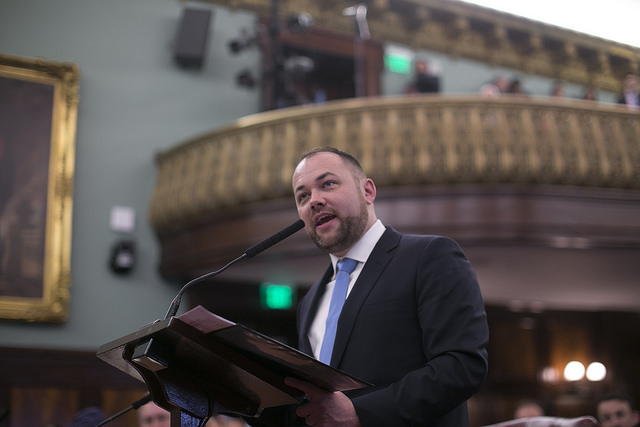 |
7. Now Pursuing Diversity, New City Council Speaker Has Employed Mostly White Men
by Samar Khurshid, January 2018
During the race to become the next speaker of the City Council, questions were raised about diversity in city government leadership given the fact that the mayor and comptroller were both white men, along with top statewide positions. As Corey Johnson won that race, he talked about both the diversity he would bring to the role as an openly gay and HIV positive person, and the diversity he promised he would bring to the Council under his leadership. But a review of Johnson's hiring as a City Council member showed a track record of largely employing white men.
Read the January 2018 article that examined new Speaker Corey Johnson's past staffing demographics and his pledge to hire a diverse staff as speaker amid questions about the elevation of another white man to a powerful city government position.
 |
8. Close Ties Among Bronx Electeds, Campaign Consultants, Lobbyists and Donors
by Jake Shore, October 2018
There are often blurry lines in politics, especially when government and campaigns are concerned, involving lobbyists, consultants, donors, and elected officials who have various relationships. Some of the closest ties in New York politics have included State Senator Jeff Klein and City Council Member Mark Gjonaj, along with consultants and lobbyists who have worked with them, and donors who have given to their campaigns.
Read the October 2018 article that examined the close ties among Klein, Gjonaj, campaign consultants and donors, and others in their orbits.
 |
9. Why Does Crime Keep Falling in New York City?
by Samar Khurshid, January 2018
While New York City has seen decades of declining crime numbers, part of a national and international trend, do we really know why? In this article we explored the theories and the facts about New York City's remarkable crime decline.
Read the January 2018 article that examined the decades-long crime decline in the city, which has continued under Mayor Bill de Blasio, some of the reasons experts provide for the trend, and what can actually be supported by data.
 |
10. A Closer Look at 'Vital Brooklyn,' Cuomo's Plan for 'One of the Greatest Areas of Need in the Entire State'
by Rachel Holliday Smith, December 2018
Governor Cuomo surprised many people when he first announced in 2017 a state investment of $1.4 billion in Central Brooklyn, with the governor explaining that "Vital Brooklyn" was a program to bring much-needed resources to an area of the city and state with some of the most significant challenges facing New Yorkers, including poor health, bad schools, lack of park space, and more. The program hadn't been a heralded or even named part of the prior state budget deal, but Cuomo explained it as a major initiative and went on to make many Vital Brooklyn announcements, including several in the lead up to the 2018 primary election wherein he was attempting to defeat Cynthia Nixon while relying on a political base including Central Brooklyn voters.
Read the December 2018 article that examines what exactly Vital Brooklyn is, where the money comes from and is going, and how Cuomo has used the program to make those many announcements.
***
by Ben Max, Gotham Gazette
@tweetBenMax @GothamGazette




